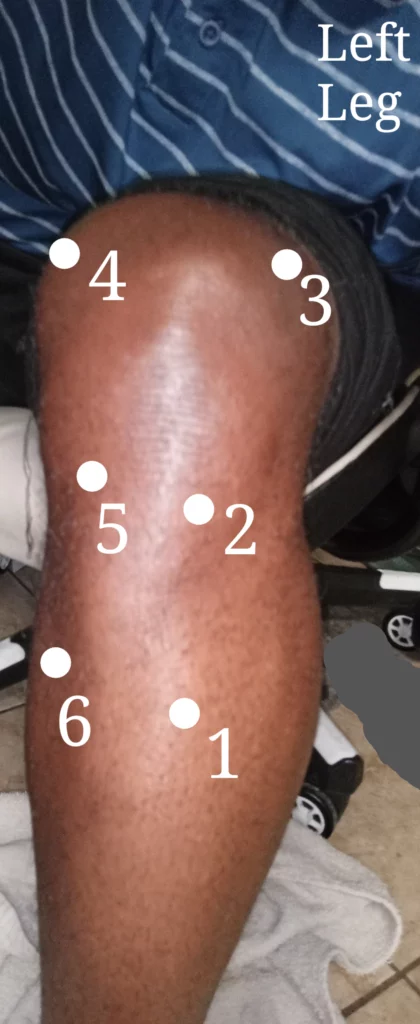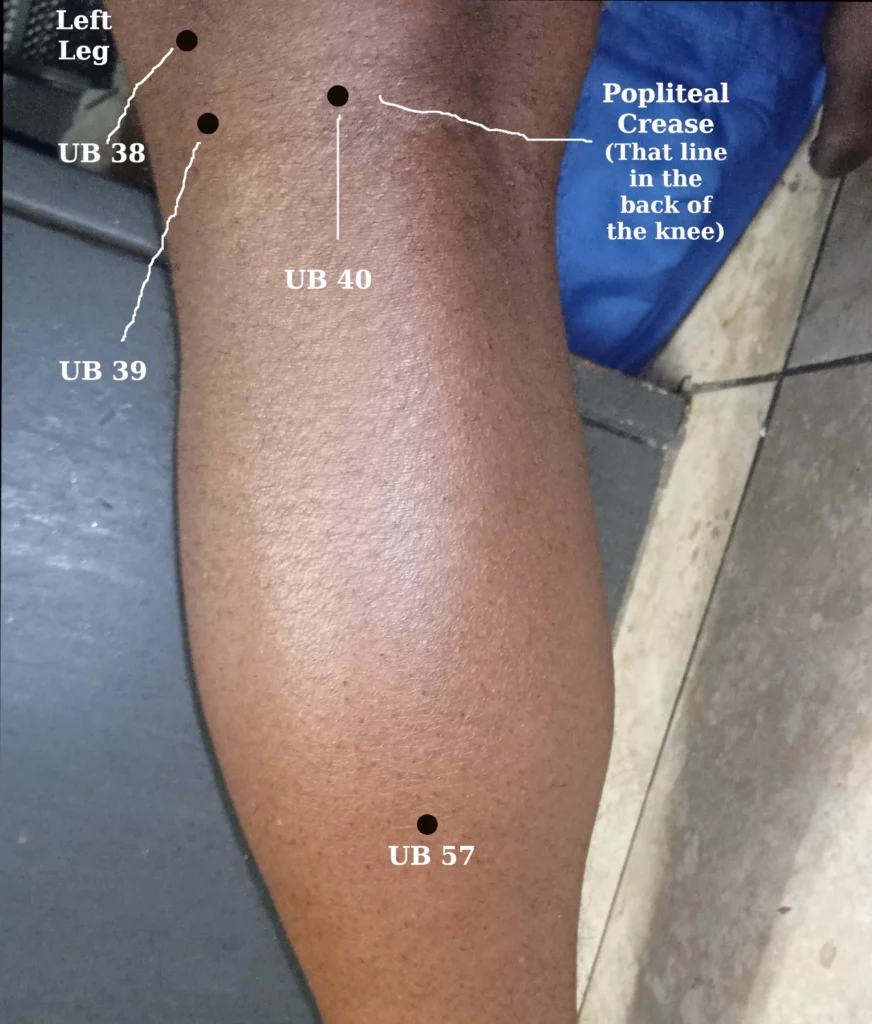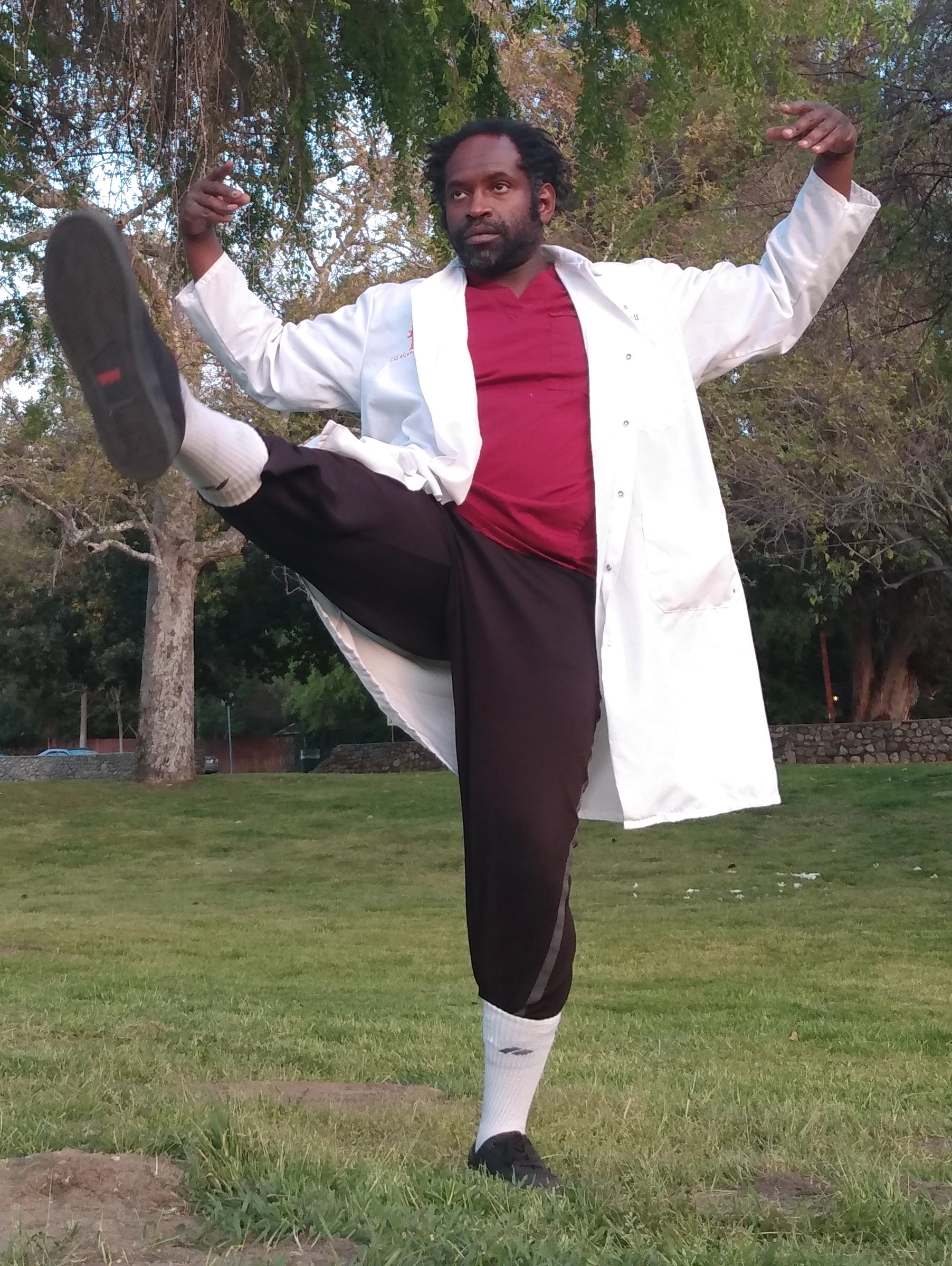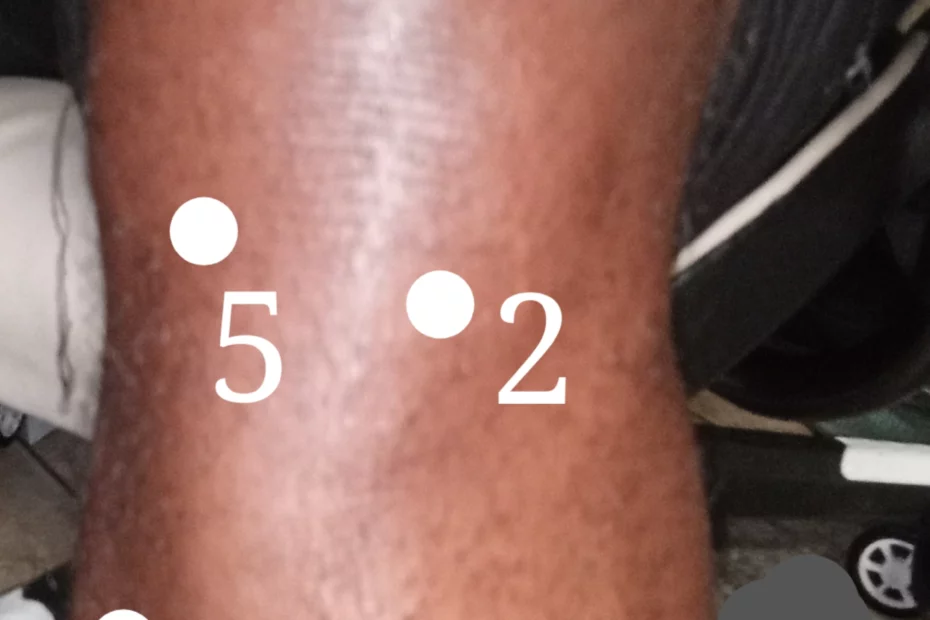Table of Contents
You asked for it, and you got it! Combine with my clinical experience, I hope after reading this that you will have a better understanding of a few things. One, that there are acupressure points that can help the knee but there are no guarantees. Everyone is different, obviously! The goal is to provide options and see which works the best. As always, consult your primary healthcare provider prior to starting any health regimen.
Acupressure, like acupuncture, uses the same points to stimulate the body’s natural healing abilities. For knee pain, There are many acupressure points that can be effective. Here we list the major points surrounding the knee as an easy, safe reference.
Acupressure points for knee pain with pictures and video provided for extra guidance:


(1) Stomach – ST36 (Zusanli)
Located about four finger widths below the kneecap and one finger width outside the shinbone. It’s a renowned point for strengthening the whole body, including the knees.
(2) Stomach ST35 (Dubi)
Found when the knee is flexed, in the outside depression of the eye of the knees It’s directly related to knee issues, especially pain and swelling.
(3) Stomach 34 ST34 – (Liangqiu)
Located on the front of the thigh, ST34 is found approximately a hand’s breadth above the kneecap when the knee is flexed, on the line connecting the lateral border of the patella and the anterior superior iliac spine. It’s the xi-cleft point of the stomach meridian, which is used to address acute conditions. ST34 is particularly indicated for knee pain when the pain is on the anterior or lateral aspect of the knee. It’s also used for digestive issues, which can be related to the muscle tension around the stomach meridian.
(4) Spleen 10 – SP10 (Xuehai)
Known as the “Sea of Blood,” SP10 is located on the inner thigh, about two finger widths above the knee when the knee is flexed, near the inner border of the patella. This point is traditionally used to invigorate blood and help with skin conditions, but it can also be beneficial for addressing pain and inflammation, which can be helpful for knee pain, especially when it’s related to menstrual issues or muscle strain in the thigh.
(5) Xiyan
Located on on the inner depression of the eye of the knee, when the knee is flexed (bent like sitting down).
(6) SP9 (Yinlingquan)
Found on the inside of the leg, just below the knee in the depression just below the bone. It’s used for knee pain associated with swelling or fluid accumulation.
Acupressure Points For Knee Pain On The Back Of The Knee


(7) Urinary Bladder 38 – UB38 – (Fu xi)
This point is not classically defined in most acupuncture texts. It may be a point that is used by some practitioners for specific, possibly non-standard treatments. The naming suggests it might be an extra point rather than a traditional one, and its location and use could vary. It’s not commonly referenced in standard acupuncture literature.
(8) Urinary Bladder 39 (UB39) – Weiyang
This point is located at the lateral end of the popliteal crease, on the same level as UB40 but towards the lateral aspect of the leg. It’s known as the “Lower He-Sea point of the San Jiao,” which means it’s traditionally used to treat issues related to the San Jiao (Triple Burner) meridian, which in Chinese medicine is involved with the movement and transformation of fluids in the body.
(9) Urinary Bladder 40 (UB40) – Weizhong
This is one of the most commonly used points in acupuncture. It’s located at the midpoint of the popliteal crease when the knee is flexed. UB40 is considered a powerful point for treating any kind of back pain, including lower back pain. It’s also used for conditions affecting the lower limbs, as well as for cooling the blood and clearing heat from the body, which can be beneficial for skin issues and detoxification.
(10) GallBladder – GB34 (Yanglingquan)
Located in the hollow below the kneecap and in front of the outer leg bone. This point is often used for issues related to tendons and ligaments, which are common sources of knee pain
Please note that these points are not all the points possible, and that many points may serve the purpose as deemed fit by your practitioner. That also includes what we call acupuncture distant points, or points that are away from the affected area.
(11) Urinary Bladder 57 – UB57 (ChengShan)
Is known as “Chengshan,” which translates to “Support the Mountain.” This acupuncture point is located in the calf region and is found by measuring approximately halfway between the popliteal crease (the crease behind the knee) and the heel, in the center of the calf muscle (gastrocnemius).
(12) Large Intestine – LI 11 (Qu Chi)
I couldn’t conclude this article without referring to at least one distal point, and that is LI 11. It is a point on the lateral, or outside part of the elbow, which is used for many different ailments. I use this point in conjunction with other points mention to provide a comprehensive treatment. It’s not used all the time, and not on everyone that is where being a practitioner and a provider come into play. However, it has to be on the list, and once again, one of many possible beneficial points.
Video Demonstration
I’ve included a video (using myself as the medical model, since I’m by myself while writing this!) which shows some of the points as well as how to apply acupressure to a point. Acupressure should be done for a short time, 5 – 8 seconds each point.
Precautions
As always, you should consult with a licensed acupuncturist for guidance and treatment.
Refrain from exerting pressure on areas that are wounded or show signs of swelling or inflammation (characterized by redness or a warm sensation upon touch).
Steer clear of regions that have scar tissue, as well as spots with boils, blisters, rashes, or varicose veins.
Links To External Resources
Acupressure for Knee Pain (Kaiser)
Self-Acupressure for Older Adults With Symptomatic Knee Osteoarthritis: A Randomized Controlled Trial (Pubmed)


Carlo St. Juste II, MAOM has a background in acupuncture with over 10 years of clinical experience and over 16 years in the Martial Arts. He has worked with various organizations to implement employee wellness programs including The City of West Covina, The City of Brea, Broadcom, USC, American Suzuki, and Pomona College. He is dedicated to promoting integrative health and has seen the benefits of knowledge and implementation first hand.
